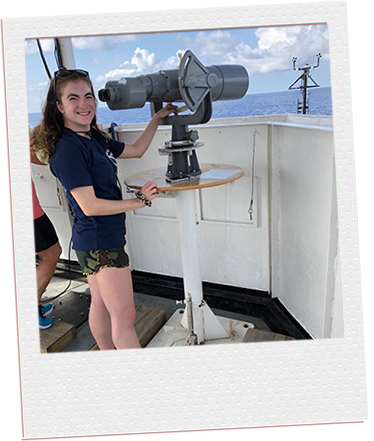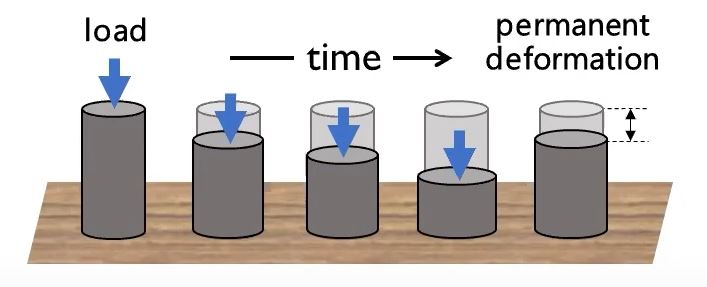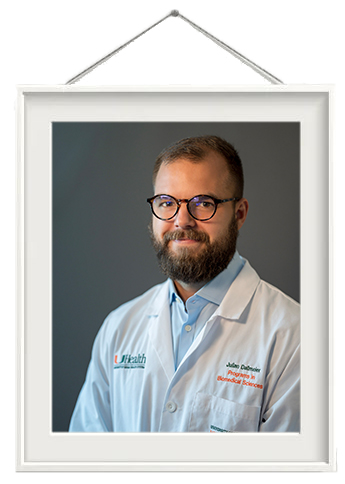From endangered whales to Alzheimer’s disease, concrete durability, and the brain-computer interface, four University of Miami graduate students applied advanced data science and computing tools to their multidisciplinary research projects selected for the IDSC Fellows Program for the 2021-22 academic year.
This hybrid (Zoom + in person) event took place on Tuesday, April 26, 2022 | 3:00-5:00 PM at the Gables One Tower, and was free and open to the public. The 2021-2022 IDSC Fellows, Ashley Cook, Julian Dallmeier, Kevin Davis, and Mingyue Wu, worked closely with multiple mentors—from their field plus an IDSC faculty mentor—to develop their computational skills and expand their research experience for these final project presentations. IDSC congratulates them all on their excellent research!
This hybrid (Zoom + in person) event took place on Tuesday, April 26, 2022 | 3:00-5:00 PM at the Gables One Tower, and was free and open to the public.
 Cetacean Acoustics | Ashley Cook
Cetacean Acoustics | Ashley Cook
As a doctoral student in the Marine Biology and Ecology program at the Rosenstiel School of Marine and Atmospheric Sciences (RSMAS), Ashley Cook is studying cetacean acoustics to detect Rice’s whales, an endangered species in the DeSoto Canyon off Florida’s west coast. “With fewer than 100 Rice’s whales remaining, we need to learn more about their location and activities in their primary habitat,” said Cook. Currently, there are 17 hydrophone sites in the region that detect the “long moans and downsweep trains” of the whales and generate recordings. However, it is not feasible to manually review the recordings to identify individual animals—particularly against background noises such as passing ships. For her project, “Detection of Rice’s Whale Calls in the Gulf of Mexico Using Passive Acoustic Data and Deep Learning,” Cook developed a call detector for this baleen whale species that could also be applied to other long-term acoustic datasets.

Concrete Durability | Mingyue Wu
Mingyue Wu, a doctoral student in the Civil, Architectural & Environmental Engineering Department studied the problem of concrete “creep,” which shortens the lifespan of structures. “Creep is the long-term deformation of concrete that is driven by sustained loads,” said Wu. “We know that how nanoparticles move under that stress depends on the structure of the local environment, but we don’t yet understand those patterns.” Wu applied machine learning techniques to molecular dynamics simulations in her project, “The Role of Cement Nanostructure on the Creep Behavior or Concrete.” She hopes to identify insights that will significantly enhance future concrete durability.

Brain-Computer Interface | Kevin Davis
 Kevin Davis, an M.D./Ph.D. student in the Biomedical Engineering program, applied IDSC’s Advanced Computing resources to improve the functions of an implanted brain-computer interface in a homebound patient with chronic cervical spinal cord injury. “By using machine learning and classification and regression algorithms, we expanded the interface developed at the UM Computational Neuroscience Brain + AI Lab,” said Davis. “This could be of great potential benefits to patients with neurological injuries or disease.” Davis’s project, “Expanding Functional Control of a Fully Implanted Brain-Computer Interface,” involved capturing signals from the brain using a non-invasive technique called electroencephalography and sent to a computer on the patient’s wheelchair. Machine learning and deep learning algorithms were used to translate those commands from the brain into hand, wrist, and elbow movements.
Kevin Davis, an M.D./Ph.D. student in the Biomedical Engineering program, applied IDSC’s Advanced Computing resources to improve the functions of an implanted brain-computer interface in a homebound patient with chronic cervical spinal cord injury. “By using machine learning and classification and regression algorithms, we expanded the interface developed at the UM Computational Neuroscience Brain + AI Lab,” said Davis. “This could be of great potential benefits to patients with neurological injuries or disease.” Davis’s project, “Expanding Functional Control of a Fully Implanted Brain-Computer Interface,” involved capturing signals from the brain using a non-invasive technique called electroencephalography and sent to a computer on the patient’s wheelchair. Machine learning and deep learning algorithms were used to translate those commands from the brain into hand, wrist, and elbow movements.

Alzheimer’s Disease Pathology | Julian Dallmeier
 A Neuroscience doctoral student, Julian Dallmeier hoped to gain new insights into Alzheimer’s disease by studying patterns in brain tissues. “Being named an IDSC Fellow is a great honor,” he said. “This program is a great opportunity for young scientists to learn more about data science in their disciplines.” Dallmeier applied feature extraction and clustering algorithms to study hyperphosphorylated tau and amyloid plaques—a hallmark of Alzheimer’s disease—in his project, “Spatial Clustering Analysis of Corpora Amylacea and Tau in the Hippocampus.” Using tissue samples from UM’s Brain Endowment Bank, Dallmeier looked at clustering patterns of plaque buildup to see correlations to genetic risk factors.
A Neuroscience doctoral student, Julian Dallmeier hoped to gain new insights into Alzheimer’s disease by studying patterns in brain tissues. “Being named an IDSC Fellow is a great honor,” he said. “This program is a great opportunity for young scientists to learn more about data science in their disciplines.” Dallmeier applied feature extraction and clustering algorithms to study hyperphosphorylated tau and amyloid plaques—a hallmark of Alzheimer’s disease—in his project, “Spatial Clustering Analysis of Corpora Amylacea and Tau in the Hippocampus.” Using tissue samples from UM’s Brain Endowment Bank, Dallmeier looked at clustering patterns of plaque buildup to see correlations to genetic risk factors.
“IDSC’s goal is to inspire a new generation of leaders in data science to cross traditional boundaries of disciplines,” said Giannina Bianchi, IDSC Engagement and Outreach Manager, who introduced the new IDSC Fellows at a December 7, 2021 webinar launch event. “Through IDSC they will have access to our advanced computer resources in their research.”
Do you have a research project you want to take to the next level? Need help with advanced computing or data?
Apply Now!
Applications are now being accepted for the 2022-2023 IDSC Fellows program.
The deadline to apply is Friday, October 28, 2022. Read more . . .
Tags: 2021-2022 IDSC Fellows, Alzheimer’s Disease Pathology, Ashley Cook, brain-computer interface, Cetacean Acoustics, concrete durability, Julian Dallmeier, Kevin Davis, Mingyue Wu





